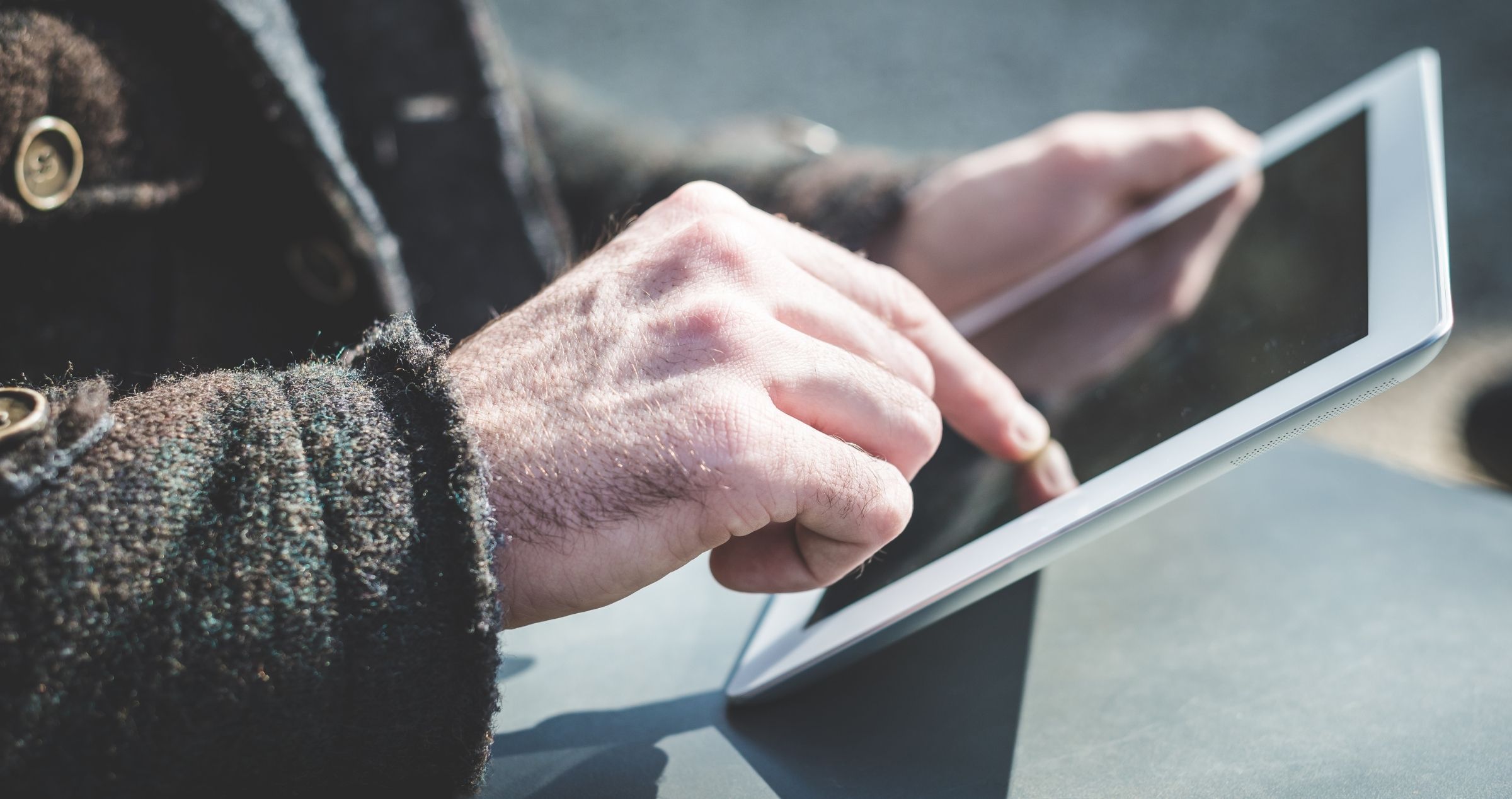Share
Using smartphones and tablet computers as low-vision assistive devices: Smartphones, tablet computers and other ‘smart’ devices are becoming more common in everyday life. The popularity of these devices has driven advancements that have made it possible for people with different physical capabilities, including those with low-vision or a visual impairment due to glaucoma or other eye conditions, to fully utilise their devices and lead more independent lives.

Third-party applications or apps and in-built accessibility features available on iOS and Android platforms enable smartphones and tablets to be used as low-vision devices with a simple tap or swipe of the screen.
Smart devices are a promising alternative to traditional assistive aids that are commonly used in low-vision rehabilitation. Smartphones and tablets are highly customisable, digital multi-purpose tools capable of performing a growing range of tasks. A single smart device can be set up to function as a barcode scanner, illuminated magnifier, talking navigation system and document reader all at once, meaning that users do not need to purchase and transport multiple bulky and typically costly low-vision aids to carry out the same tasks. The streamlined design, portable nature and widespread acceptance of smartphones and tablets make these devices perfect for everyday use in public spaces, even in eccentric or unconventional ways. Apps can be downloaded at little or no cost and in-built accessibility features such as VoiceOver or Talkback can be used immediately, with providers offering instructional sessions in these features.
Recent innovations in artificial intelligence (AI) and adaptive technology have taken the capabilities of smart devices even further. Apps such as Seeing AI and Envision AI that are specifically designed for individuals with low vision use a smart device camera to audibly describe the visual environment, recognise people and their emotions, identify colours, read out handwritten documents and short text such as menus, street signs and product information. Other innovative apps – Aira and Be My Eyes – connect individuals with low vision to sighted agents or volunteers who provide assistance via livestream video. The capabilities of third-party apps and smart technology in general are likely to improve in the coming years, allowing more people to autonomously access the information and services they need.
Researchers at the Lions Eye Institute have recently embarked on a project that aims to explore the use of low-vision devices, smartphones and tablets within the low-vision community in Perth. The Smart Technology, applications and Accessibility Features (STAF) questionnaire will be used to determine what factors influence low vision and smart device ownership and use and uptake of various third-party apps and accessibility features. The outcomes of this project may provide a basis for assistive technology recommendations made by clinicians and rehabilitation providers for different eye conditions and improve access to information and services for individuals with a visual impairment. This study will also allow researchers to evaluate the feasibility of offering patients training sessions in various apps as an additional clinical service.
This list is not exhaustive as apps are constantly being developed, so notable examples are listed under specific categories on the resource page.
Navigation Apps
- BlindSquare
- Microsoft Soundscape
Transportation Apps
- Moovit: Public transport live
Object Identification Apps
- TapTapSee
- AiPoly
Connecting with a sighted individual Apps
- Aira
- Be My Eyes
Multi-purpose Apps
- Seeing AI, Envision AI and Daily by ViaOpta use AI and adaptive technology to audibly describe the visual world located in front of a smart device camera in real time.
For a more detailed description visit the Apps page.
Finally, some tips on how to access and use various apps and services are described at the end of the article.
Tips and tricks
- Accessibility features are built-in to many smartphones and tablet computers. These features enlarge the appearance of the screen, magnify objects via the camera, enlarge or bold text and invert the device’s colour display. Other features such as VoiceOver or TalkBack audibly describe items on the screen. The availability of certain features will vary based on the type of device used.
- Apple offers in-person training sessions in accessibility features on various devices (iPhone, iPad and Mac). Visit https://www.apple.com/au/today/calendar/?topics=accessibility-audience to check the availability of accessibility sessions.
- Many third-party apps that are not specifically designed for people with low vision or a visual impairment can be utilised with VoiceOver or TalkBack turned on.
- Third-party apps can also be used to supplement certain accessibility features:
Magnifier - SuperVision+ Magnifier and weZoom Magnifier and Low Vision Aid enlarge the appearance of text and objects through a smart device camera. Users may invert the colour display, alter image contrast and brightness and send or save magnified images. Both apps are free to download on iOS or Android device.
Spoken content - this iOS accessibility feature reads written text displayed on screen out loud and can be used on emails, websites, social media posts and PDF documents. Optical character recognition apps such as the KNFB Reader perform similar functions and can also be used for text to speech conversion of written or typed text in document images. The KNFB Reader app is $159.99 to download on iOS and Android devices. - e-books, e-audiobooks, magazine and newspaper articles can be accessed through the BorrowBox or Libby, By OverDrive apps. Both apps are free to download and use with a library membership. Other notable apps for listening to audiobooks or newspaper articles include Audible, Audiobooks.com, PressReader and Curio. These apps are free to download on iOS and Android devices and require a paid subscription to access content.
- Registered Vision Australia members can download the VA Connect app for free access to audible books, magazines, newspapers, Podcasts and Radio Stations.
- Comprehensive, turn by turn navigation can be enabled on the Google Maps app. Detailed Voice Guidance alerts the user when approaching intersections, provides feedback on the direction travelled and automatically re-routes if a wrong turn is taken. The Google Maps app is free to download on iOS and Android devices.


